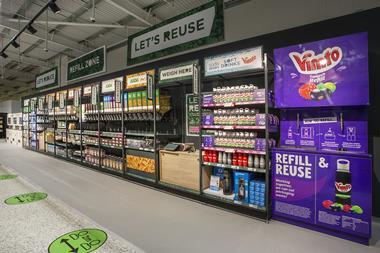Sir: With regard to Thomas Hobbs’ excellent feature ‘Do pound shops stack up online?’ (8 March, p38), I would just like to make one correction. The domain name that I own, poundshop.co.uk, was the first-ever transactional online pound shop and actually ran from 2004-2011 rather than closing in months as stated. It was an addition to our bricks and mortar high-street store.
With the narrow margins on branded goods, the only way these discount sites can work is if they piggyback on to an existing infrastructure, so that warehouse, buying teams and distribution facilities are already in place. Any online sales are a bonus.
Costs are critical and I still can’t quite get my head around the fact that for every new member of staff you take on, you probably would need an extra 100 x £10 orders per week just to cover their wage!
Like Poundland’s Steve Smith, we found, when trading all those years ago, that the majority of our online orders were bulk orders for individual lines, sometimes products not on the website - often these had to be sourced separately. The public weren’t used to ordering a range of goods across the board.
Maybe with the increase in online grocery shopping that perception has now changed and people don’t mind trawling through various categories on a website. Maybe the profits in the future will be made not from actual trading but from selling the business as a going concern along with the massive database of customers built up over the years with subsidised transactions?
David Wilson, retired, founder of poundshop.co.uk
Don’t let a price war hit quality
Sir: So, Morrisons has fired the starting gun on a supermarket price war (‘Price war fear as Morrisons plans to slash margins,’ 15 March, p4).
My sincerest wish is that it is NOT suppliers who get squeezed the most. Surely, it’s time for retailers to look honestly at their whole supply chain in order to squeeze out inefficiencies. ‘Product’ is the ‘gem’ at the heart of what all consumers want to buy. If too much pressure is put on manufacturers, there will be a knock-on effect in poorer product quality.
In light of all the issues surrounding obesity, sugar content and ingredient provenance, there is a real need for once-in-a-generation fresh thinking. It’s also an opportunity for supermarkets to think about whether they can do more to support British farmers/producers so they can employ more staff/improve balance of payments.
One obvious area for change is fresh produce. How can the supply chain be overhauled so that produce can stay on the shelf for longer without affecting product quality?
Casper Gorniok, ex fmcg industry marketing manager
Shoppers want simplicity
Sir: The problems at Morrisons reflect the general squeeze on the middle-ground retailers – squeezed by highly competitive and confident discounters and the quality premium retailers.
UK shoppers are now spoilt for choice and making the most of the options available. Mainstream retailers, like Morrisons, can’t take shopper loyalty for granted, and need to be focused on delivering a proposition that is relevant, and differentiated.
Increasingly, shoppers want a simple approach to grocery shopping. As one shopper we spoke to put it: “Shopping in Aldi and Lidl means I go in, add up prices as I go round, and know what I’ve spent when I leave. Shopping in British supermarkets means before going I have to sort out loyalty vouchers and take a calculator to work out different offers – if I want to eat the same thing for six days on the trot. After shopping I then need to sit at a computer to work out my loyalty points.”
Danielle Pinnington, MD, Shoppercentric
Tackle wider waste issue
Sir: While it was heartening to read your story on consumers’ greater awareness of food waste (‘Waste-aware Brits cut spend on fruit & veg in pricey 2013,’ 8 March, p4), pre-consumer waste also needs consideration.
A key challenge is ensuring all supply partners are clear and aligned on the quality attributes expected by the customer; this includes product quality, packaging, value and service, and establishing if they can constantly deliver on these. The flow of information up and down the supply chain on these attributes is vital to the effort to reduce food waste.
Setting out clear specs that involve supply partners from the outset and the ability to manage change and variation to those specs in real time is essential. The use of collaborative technologies that can measure, control and provide feedback on quality at all points across a supply chain are pivotal to reducing food waste.
The technology is here. We just need more supply chain participants to adopt it.
Mark Taylor, chairman, Muddy Boots Software


















No comments yet